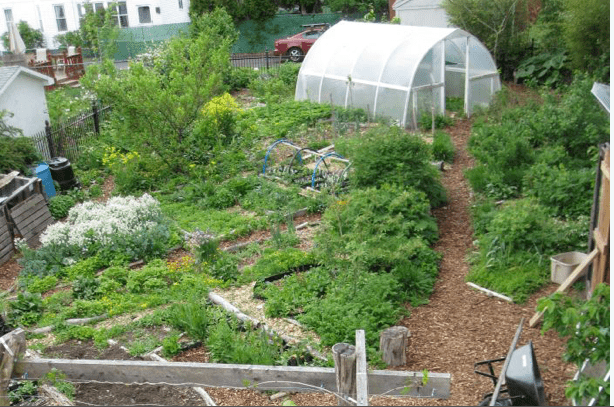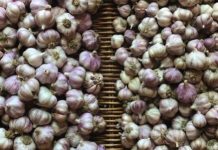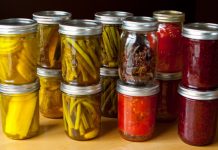Many people enjoy the concept of being self-sufficient in manufacturing, they really don’t see that as an objective that can be accomplished. After all, how many of us still have exposure to growing land to even achieve self-sufficiency?
Ok, might be you’re shocked. Only one acre of land is enough to render you pretty near self-sufficient, if you’re clever about how you’re cultivating it, and an acre isn’t that large actually. Technically an acre is the area of a rectangle one chain by one furlong, but almost nobody knows what these measures are anymore. An acre is a square approximately 70 yards to one side of regular units – approximately two-thirds the size of a football field. If your land occupies one acre, you will manage it as a smallholding providing the bulk of your food needs.
Of course you ought to be careful about it. A hectare isn’t much ground, but traditional farming methods won’t fit for you. But if you set the correct approach to it, you’ll be able to generate a decent amount of food.
Planning
It’s not enough to map out some fields on a one-acre farm, and start increasing things. You need to make sure that any aspect of your property is having the maximum usage. Find out just what you’re going to do before you even pick a shovel.
Start with a land map, and mark any places that can not be farmed. Obviously, this involves houses but also waterways, wetlands and boggy areas. First, take a stroll through every section of the plot and inspect the dirt. If there are various forms of soil, label where it is located on the diagram.
Remember the local climate, as what you are developing can impact it. Broad, cold winters or semi-arid environments rule out certain crops and render others more practical. Check how long your growing seasons will be; use local climate data from the National Weather Service if you’ve recently moved into the area.
If you’ve got a comprehensive map, you can start figuring out where stuff should go. There are a few things that you’ll need to prepare for as well as real crops:
- To store the machinery and tools, you’ll need sheds. Look at areas that provide easy access to where the contents of the shed should be needed, and to the transport network. If you get ten tons of fertilizer delivered you don’t want to be carrying sacks by hand because the truck can’t get to your storage shed. You also don’t want to take up prime fertile land for infrastructure, so try to put it on less useful land.
- The use of greenhouses will prolong growing seasons and even encourage you to grow crops that typically wouldn’t thrive in your local climate. Neither should they have to be pricey – transparent plastic sheeting over a lightweight frame is always all you need. What counts is that it lets in the sunshine, but does not cause the hot air to rise. Greenhouses will collect moisture if you have a dry climate, too. Tomatoes, soft fruits and even flowers are stuff to develop in them-selling cut flowers is a great way to generate some revenue from your crop.
- Even if you’re a vegetarian, livestock is a large part of a small farm. Manure is free fertilizer and it will eat a lot of the waste produced on your plot if you get the right livestock. You may be generating your own food, meat and dairy products if you are not a vegetarian. You need to consider ways to raise livestock without taking up property that could be used for vegetables, with one acre of land available.
Now that you’ve planned the basics, let’s look at everything in a bit more detail.
Setting up infrastructure
To operate a one-acre estate, you don’t need a lot of resources but you’ll need plenty. Mainly, you need room for parts, machinery, and items of any sort. Essentially, it implies getting a stable. If your land already has a barn, you’re in luck, otherwise you’re going to need to build one.
A barn just needs to be big enough to store items in an organized way. Bins for feed and fertilizer, some more for root vegetables you’ve harvested, and enough space that you can store any machinery and have space to work on it. You can cultivate an acre without any equipment, but if you extend your plot in the future, a small tractor and some attachments can make things even simpler – so you will need them.
If possible, locate the barn near your house on a hard standing. That makes it easy for deliveries.
Related: Why You Should Build and Use a Root Cellar?
Greenhouses
The greenhouses may be very helpful – or even necessary – depending on the local soil and environment. Within the temperature and humidity should be higher and opens up new options. A kerosene heater can prolong rising seasons much more, without costing a great deal of power.
You have 2 greenhouse choices. To offer them extra security, they can be installed directly over field planted crops or you can develop small, high-value plants in boxes or containers. That helps you to develop land-based produce that is not suitable for planting.
If you don’t have tons of strong winds, it’s simple and inexpensive to create a lightweight greenhouse. A simple wooden or aluminum box, covered with a layer of plastic, should do well. You may also uninstall and store a greenhouse like this during the winter, or transfer to various locations while you rotate the crops.
Crops
You have four main options for your one-acre farm:
- Potatoes and sweet potatoes
- Root vegetables – carrots, turnips, rutabaga and beets
- Salad vegetables – lettuce and cabbage
- Legumes – peas and beans
Generally speaking, you’re going to want to grow more than one crop in each category, introduce some variation, but don’t go too far – more crops means fewer output, and if your farm is divided into hundreds of tiny pieces, each with a specific crop in it, you’ll find your time eating up really soon. Aim three of each. That means you will have 12 plots, each with a specific crop.
Related: Where To Find High Quality Survival Foods
You need to split the usable land into fifteen pieces to do this, so you can conduct crop rotation. If you continue to develop the same crop year after year on a plant, you can soon see yields beginning to decline, so you are more likely to lose parasite or disease crops. To avoid that, use each plot each year for a new crop, because you don’t take all the nutrients out of the soil – and keep the plot fallow every fifth year; give it a year off. This, together with one of the other years of growing peas or beans, will sustain the soil. Fallow plots, like clover, can be planted with grass or a grazing crop.
Livestock
You don’t want to fill up land for the grazing livestock with only one acre to grow on. You can hold a donkey, but then you would need to still use some land to raise winter fodder. Any simplified livestock options make it easier to stick to:
- Chickens, ducks and geese are all quick to manage, they don’t require a lot of feed, and they’re really successful. They’ll keep you stocked with both meat and eggs, providing you an inexpensive protein source. Do not build costly poultry houses: hold your birds in movable chicken wire enclosures and position them on your fallow plots. A 15×20 foot enclosure with an enclosed nesting box houses a dozen chickens and can be easily moved by a couple of people every few days. The birds will forage for insects, worms and seeds to supplement their feed. Fit a hatch so you can access the nesting box from outside the enclosure and collect eggs.
- Other valuable animals are goats. You can use their milk to make cheese, they are a healthy, fast-growing meat supply, and they will eat just about anything. Cover the fallow plots, and let goats graze on them. If your plots are approximately 50 feet square, you can have two goats in there. Every few days shift them onto a new plot.
- A few pigs can consume most of the kitchen scrap as well as leftover root crop vegetables. If you have an oak tree on your farm, in the fall, pen them under it, and they’ll eat the acorns happily. Pigs only need a safe place from the heat to sleep and shelter; they can get sunburned. A low plywood shelter would be good with some straw bedding.
You can comfortably hold three dozen chickens, half a dozen goats and a couple of pigs, with your fallow plots and some meat. That’ll give you about 300 pounds of pork, 100 pounds of goat, and all the milk and eggs you can use. That also ensures that on the fallow plots you might not be increasing crops, but they still provide food for you – that’s the kind of productivity you’re aiming for on a one-acre farm.
With a certain amount of imagination, you will find ways to get food even from areas of your land that seem totally useless. If a boggy patch occurs, please see if it is ideal for rising cranberries. Is there a pond in there? You can be able to carry catfish up in it. By efficiently utilizing the vertical dimension, wall gardens will grow a surprising amount of lettuce and other small vegetables. An acre is not a lot of land but you’ll be surprised at how much food you can get from it with some ingenuity and work.





















